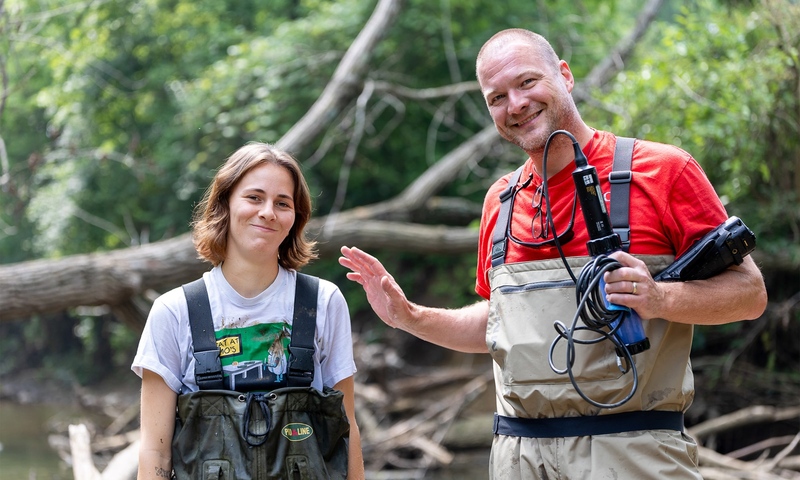
David Goodwin
Answering a question incorrectly sparked my love for geology and geoscience education. In the freshman year of my undergraduate career, I enrolled in my first geology class. Early in the semester, the professor, who later became my mentor and eventually a good friend, asked the class to explain why the Hawaiian Islands form a straight line. I raised my hand and confidently answered that the hot-spot moved under the crust thus creating the linear chain of islands. “Actually, Dave, that’s not quite right,” my professor corrected, “but I like the way you’re thinking,” and then he began my first introduction to plate tectonics. I was disappointed to be wrong but proud that the professor appreciated my creative thinking. This one remark encouraged me to learn more and has inspired and motivated me ever since. One of my many goals as a educator is provide this same kind of enthusiasm and encouragement for my own students, even if they don’t get the answer right the first time.
Research
My current research involves documenting and interpreting records of environmental variation archived in the hard parts of modern and fossil organisms. This is accomplished primarily through calibration of environmental conditions with skeletal archives: specifically, geochemical variations and patterns of shell growth. The geochemical component of my work revolves around light stable-isotopes, while the analysis of growth patterns focuses on periodic increments deposited in response to environmental and astronomical pacemakers. Together, these analytical techniques, commonly referred to as sclerochronology, have enabled me to work in several different research areas. While each has a different focus, they are connected by a common theme: how are environmental conditions recorded in the geologic record in general, and in the skeletons of organisms in particular? And, how can these archives be used to address a variety of biological and geological questions?

